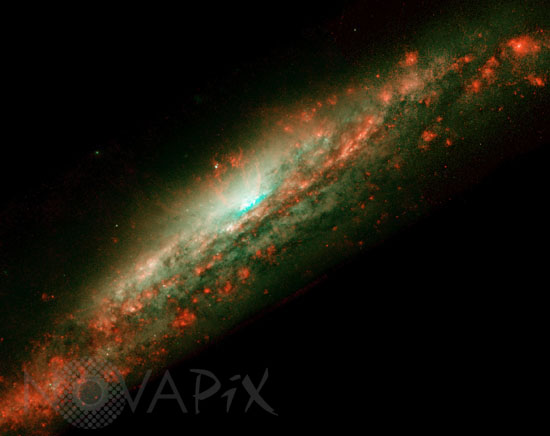Photo Agency - Astronomy - Space - Nature

Spiral galaxy NGC 3079
author: Nasa/Novapix
reference: a-gax30-79001
Image Size 300 DPI: 19 * 15 cm
The picture shows the bubble in the center of the NGC 3079 galaxy's disk. The structure is more than 3,000 light-years wide and rises 3,500 light-years above the galaxy's disk. Astronomers suspect that the bubble is being blown by "winds" (high-speed streams of particles) released during a burst of star formation. Eventually, this gas will rain down upon the galaxy's disk where it may collide with gas clouds, compress them, and form a new generation of stars. The two white dots just above the bubble are probably stars in the galaxy. According to theoretical models, the bubble formed when ongoing winds from hot stars mixed with small bubbles of very hot gas from supernova explosions. NGC 3079 is 50 million light-years from Earth in the constellation Ursa Major. The colors in this image accentuate important details in the bubble. Glowing gas is red and starlight is blue/green. Hubble's Wide Field and Planetary Camera 2 snapped this picture in 1998.
Contact : Stéphane Aubin +33-(0)9-51-26-53-76
© Novapix - All rights reserved


